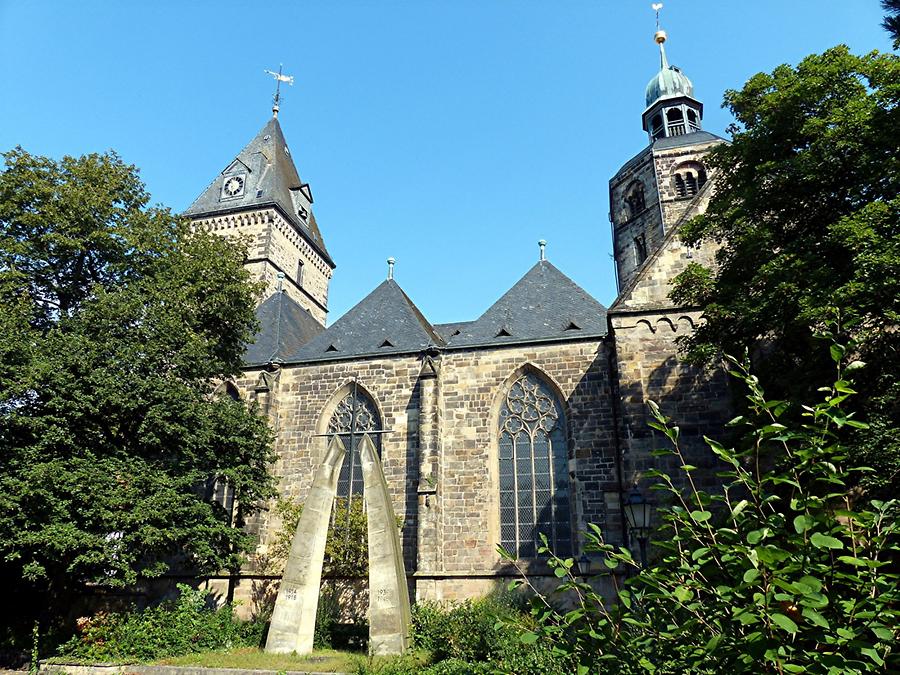Hamelin - Saint Boniface Minster#

Hamelin - Saint Boniface Minster, 2015, © Leopold Röhrer
The town on the Weser, known from the legend of the Pied Piper of Hamelin
Hamelin
, dates back to first settlements in the Stone Age. At the end of the 8th century the Benedictine monk Erkanbert was consecrated bishop for the then newly-conquered missionary district between the Oberweser and the Leine and settled down in the Romanus monastery in Hamelin. In the 9th century, a market settlement was built around the monastery, which was mentioned as a town around the year 1200 AD. Thus Hamelin is one of the very first cities in the former Kingdom of Hanover. The Protestant-Lutheran Saint Boniface Minster was rebuilt several times, from the Romanesque building of 812 only the transept with its crossing tower and the west tower survived, the nave was converted as of 1241 into the Gothic hall church. In the Baroque period, the crossing tower received its present lantern. Especially the north side of the church, but also the towers, show neo-Romanesque elements. The interior is mainly from the late 20th century.
Die Stadt an der Weser, bekannt aus der Sage vom Rattenfänger von Hameln
Hamelin
, geht auf erste Siedlungen aus der Steinzeit zurück. Ende des 8. Jhdt. wurde der Benediktinermönch Erkanbert zum Bischof für den damals neueroberten Missionsbezirk zwischen Oberweser und Leine benannt und ließ sich im Romanuskloster in Hameln nieder. Im 9. Jhdt. entstand um das Kloster eine Marktsiedlung, die schon um das Jahr 1200 als Stadt erwähnt wird. Damit gehört Hameln zu den allerersten Städten im ehemaligen Königreich Hannover. Das evangelisch-lutherische Münster St. Bonifatius wurde mehrfach umgebaut, vom romanischen Bau von 812 sind das Querhaus mit seinem Vierungsturm sowie der Westturm erhalten, das Langhaus wurde ab 1241 zur gotischen Hallenkirche umgebaut. Im Barock erhielt der Vierungsturm seine jetzige Laterne. Vor allem die Nordseite der Kirche, aber auch die Türme zeigen neoromanische Bauteile. Die Innenausstattung stammt überwiegend aus dem späten 20. Jahrhundert.